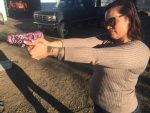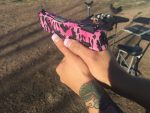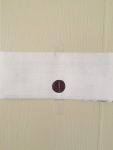In “Part One of Basic Handgun Marksmanship Skills”, we looked at some firearms 101 and gave instructions for a test to determine if you are right eye dominant or left eye dominant. We also went over bone support and stance as well as safety procedures and basic rules to prevent accidental shootings. Today, we will dig into the basics of handgun selection, ammunitions, and becoming proficient in the use of your handgun. I will also share my recommendation for how to train under pressure. This is a means to prepare for the stressful situation of a self defense scenario.
Choosing a Handgun
For many people, choosing a handgun is confusing. I always ask people who are interested in buying a handgun for the first time, what they are interested in using it for. Most people I encounter in my gun store tell me that they are looking for a gun for concealed carry purposes. They are typically interested in something in the .380 class or slim single stack 9mm or .40. I always make sure to explain what they are getting. They are then not surprised the first time they pull the trigger on that compact concealed carry gun. The smaller the gun, the larger the felt recoil is going to be. As a general rule, accuracy is not going to be spectacular either. Although for typical ranges that you would be in need of defending yourself, these small guns are more than acceptable.
For novice shooters, I always let them know that they are generally better served with something in the mid-size class. A Glock 19, 23, Ruger SR9C or SR40C, or Smith and Wesson Shield works well. This class of handguns is much easier to shoot accurately. It is not so unwieldy to not be able to be carried concealed.
Hunting
If you plan on using your handgun to hunt with, you need to choose something of at least 40 caliber. However, a good .357 revolver makes a fine side arm, and some of the newer models from Taurus and Smith & Wesson hold eight rounds while allowing you the ability to also shoot .38 special rounds for practice. There is no substitute for quality either. So once you know what your intended use for a hand gun is and you are clear on the advantages and the associated limitations of each type and size, try to buy the best handgun you can afford. Revolvers and autoloaders in the 10mm class or .44 Magnum class are great for self defense in bear country. However, the cost of ammunition and the felt recoil are not for the feint of heart.
There are several different types of handguns available for you to choose from. Below, I will go over the various types and some recommendations.
Semi-Automatic Handguns
Semi-automatic handguns are by far the most popular these days. They offer you, the shooter, the most modern designs in the most modern materials with extended magazine capacities. There are basically four types of semi auto handguns. Traditional ones, like a Beretta 92 or Smith & Wesson 4506, are both single and double action capable. Handguns like a Colt 1911 or clone by Remington, Ruger, Kimber, et cetera are considered single action. Some semi-auto handguns are considered to be double action only. They have a much longer trigger pull than any other type of semi-auto handguns do.
Handguns, like the Glock line or Springfield XD line, are what are referred to as striker fired. These give you, the shooter, the same trigger pull/feel with every shot. Semi-auto handguns eject the spent cartridge, and they load the next cartridge automatically after you have loaded the first round into the chamber, hence the term semi-automatic.
Revolvers
Revolvers are named for their center-mounted revolving cylinder. The cylinder spins in either a clockwise or counter clockwise manner each time you pull the trigger or cock the gun. Most revolvers are both single and double action capable. The double action pull is much longer and harder than the single action pull. The upside to revolvers is that they are generally less prone to malfunctions and can handle more powerful rounds than can semi-automatic handguns, as a general rule.
Single Shot Break Open Handguns
Single shot break open handguns, like the Thomson Contender series, are able to use multiple different barrels and calibers, and they can handle more powerful cartridges. I am not a big fan of this type of handgun, as it still isn’t as powerful as a rifle. Additionally, oftentimes you need more firepower than a single shot break open handgun can provide for you.
Derringers
Derringers are usually very small. They were the first conceal carry guns available to people. They are small and easy to conceal; however, they are notoriously unreliable. Additionally, they have rudimentary, if any, sites, which makes them point blank use only handguns. I would never recommend anyone purchase or carry one of these pieces of junk for self defense purposes.
Ammunition
I always recommend people stay with popular and proven cartridges, such as 9mm, .380, 38 special, .357 magnum, 40 S&W, 22LR, .44 magnum, .45 ACP, et cetera. A good rule of thumb is, if you can’t buy ammo for it at Walmart, don’t buy the gun.
Getting Used To Your New Handgun
The best way to get used to handling your new handgun is to simply handle it. I instruct everyone who purchases a new handgun to make sure it is unloaded and then to keep it near them when they are watching TV. I tell them to pick it up and get their hands set in the proper firing position without having to actually look at what they are doing. Your finger should be off the trigger with the gun held in your strong/dominant hand with both thumbs aligned against the side of the handgun’s frame as demonstrated in this picture by my beautiful fiancé, Nikki.
Picking up your handgun in the proper position needs to become an automatic response, and that is what muscle memory from practice will give you. For example, if you are driving down the road when out of the corner of your eye you see a child chasing a soccer ball, you don’t have to think about hitting the brakes. You simply take action and do so. This is the type of autonomic response you need to have with your handgun as well.
Becoming Proficient With Your Handgun
As with anything in life, you are going to perform as you have practiced. If you never practice, you will never be very good. Once you have decided on a handgun that fits your hand and that you can handle easily, and you’ve figured out what stance you do the best with the handgun, it is time to learn how to shoot. Becoming proficient with any firearm is about the elimination of all the variables that cause you to shoot inaccurately. Poor stance, poor position, holding your breath, and jerking the trigger all cause you to shoot erratically. These are the things that will drive your instructor crazy.
One of the best things you can do is dry firing. Although, with regard to dry firing, make sure that this practice will not harm your chosen handgun first. Place a quarter on a piece of paper and trace the outline of it, filling in the circle with a magic marker so you have a solid black circle. Then, tape this piece of paper on the wall and mark off 15 or 20 feet. Practice picking up your handgun, getting into the correct stance, and slowly squeezing the trigger as you maintain proper aim on your target. This will teach you how to effectively manage and eliminate all the variables that make you shoot poorly.
Under Pressure
Finally, adding pressure to your situation will help you hone your skills and get you used to having to get your firearm into battery for life and death situations. Go to a gun range and enter into handgun competitions that are timed. Yes, this activity will make you uncomfortable. However, the benefit of this is that if you ever find yourself in a movie theater or super market when some wacko shows up and starts shooting up the place, your training and pressure drills just may save your life and the lives of your loved ones.
(Mark Bunch is an NRA certified firearms instructor in handgun, shotgun, urban rifle, sub gun, and long range rifle disciplines and has been instructing students for over 30 years. He owns and operates his own gun shop and 1 mile gun range with his partner Mike Brizendine.)
See Also:
SurvivalBlog Writing Contest
This has been part two of a two part entry for Round 71 of the SurvivalBlog non-fiction writing contest. The nearly $11,000 worth of prizes for this round include:
First Prize:
- A $3000 gift certificate towards a Sol-Ark Solar Generator from Veteran owned Portable Solar LLC. The only EMP Hardened Solar Generator System available to the public.
- A Gunsite Academy Three Day Course Certificate. This can be used for any one, two, or three day course (a $1,195 value),
- A course certificate from onPoint Tactical for the prize winner’s choice of three-day civilian courses, excluding those restricted for military or government teams. Three day onPoint courses normally cost $795,
- DRD Tactical is providing a 5.56 NATO QD Billet upper. These have hammer forged, chrome-lined barrels and a hard case, to go with your own AR lower. It will allow any standard AR-type rifle to have a quick change barrel. This can be assembled in less than one minute without the use of any tools. It also provides a compact carry capability in a hard case or in 3-day pack (an $1,100 value),
- An infrared sensor/imaging camouflage shelter from Snakebite Tactical in Eureka, Montana (A $350+ value),
- Two cases of Mountain House freeze-dried assorted entrees in #10 cans, courtesy of Ready Made Resources (a $350 value),
- A $250 gift certificate good for any product from Sunflower Ammo,
- Two cases of Meals, Ready to Eat (MREs), courtesy of CampingSurvival.com (a $180 value).
Second Prize:
- A Model 175 Series Solar Generator provided by Quantum Harvest LLC (a $439 value),
- A Glock form factor SIRT laser training pistol and a SIRT AR-15/M4 Laser Training Bolt, courtesy of Next Level Training, which have a combined retail value of $589,
- A gift certificate for any two or three-day class from Max Velocity Tactical (a $600 value),
- A transferable certificate for a two-day Ultimate Bug Out Course from Florida Firearms Training (a $400 value),
- A Trekker IV™ Four-Person Emergency Kit from Emergency Essentials (a $250 value),
- A $200 gift certificate good towards any books published by PrepperPress.com,
- A pre-selected assortment of military surplus gear from CJL Enterprize (a $300 value),
- RepackBox is providing a $300 gift certificate to their site, and
- American Gunsmithing Institute (AGI) is providing a $300 certificate good towards any of their DVD training courses.
Third Prize:
- A Royal Berkey water filter, courtesy of Directive 21 (a $275 value),
- A custom made Sage Grouse model utility/field knife from custom knife-maker Jon Kelly Designs, of Eureka, Montana,
- A large handmade clothes drying rack, a washboard, and a Homesteading for Beginners DVD, all courtesy of The Homestead Store, with a combined value of $206,
- Expanded sets of both washable feminine pads and liners, donated by Naturally Cozy (a $185 retail value),
- Two Super Survival Pack seed collections, a $150 value, courtesy of Seed for Security, LLC,
- Mayflower Trading is donating a $200 gift certificate for homesteading appliances,
- Montie Gear is donating a Y-Shot Slingshot and a $125 Montie gear Gift certificate.,
- Two 1,000-foot spools of full mil-spec U.S.-made 750 paracord (in-stock colors only) from www.TOUGHGRID.com (a $240 value), and
Round 71 ends on July 31st, so get busy writing and e-mail us your entry. Remember that there is a 1,500-word minimum, and that articles on practical “how to” skills for survival have an advantage in the judging.











I noticed the person in the picture shooting has incorrect posture. It is a fairly typical mistake most inexperienced shooters make instinctively, and detracts from accuracty. Instead of leaning back, the shooter should actually be leaning forward a bit, slightly crouched, similar to a boxer’s ready stance. With training, this can be corrected fairly quickly.
Hi Benjamin, the person, my fiancé Nikki is simply showing how to correctly hold a handgun ie, in these two pictures which show the correct positioning of the shooters hands. She also had on high heels at the time, good thing my picture didn’t show you that huh? LOL
If you missed it in part one of this article I clearly mentioned correct positioning and explained what shooters need to be aware of, thanks for reading.
The directions given for dry fire are insufficient. The gun should be triple checked that it’s unloaded. All amunition must be removed from the practice area. And dry fire does NOT relieve you of the responsibility to point the gun only in a safe direction. So the aiming point must be placed on a surface that will safely stop the bullet – with only minimal property damage and NO personal injury.
Hi Chris, well thank you for making it safer for everyone reading.
I shoot standing, kneeling, sitting, prone, laying on my side, laying on my back, using two hands, using both my right and left hand. I shoot single rounds, double tap, totally unload mag. If you THINK (in a protect yourself and loved ones situation) that the “bad” guys are going to wait until you get into your CORRECT shooting posture you are already dead…improvise & practice–not sitting on a bench or using sandbags or getting into your correct position–this will get you killed. Almost ALL TV shows and movies (new and old) are total BS!! NO standing at 40 paces at high noon doing a quick draw–no walking down the street 4 wide side by side down to the corral..NO double fisted semi auto blasting and reloading new mags flying out of thin air…LOSERS were shot without warning and usually in the BACK!!! Criminals and “bad” guys are cowards and kill you without much of a warning, if any. ALWAYS keep your awareness level HIGH—very HIGH now-a-days. BE REALISTIC–STOP WATCHING TV AND “BS” MOVIES–GET TO YOUR FAVORITE PLACE AND SHOOT, SHOOT, SHOOT AND PRACTICE, PRACTICE, PRACTICE.
Yes shooting and training from different positions and actually getting out to practice is always going to be beneficial to shooters. We do a lot of weak hand and one hand training just in case. Another thing I think is important is to get some practice in when the weather is bad out. It might not be a nice sunny day with no wind when you find out you have to defend your life…
Thanks for all the info in the article. You’ve made me rethink my shooting practice and take into consideration if I am practicing bad habits or not.
Why thank you glad you enjoyed it.
One more comment or bonus about revolvers is unlike semi automatic magazine feed handguns which disperse your expenses cartridges onto the ground, you walk away or run away with your brass.